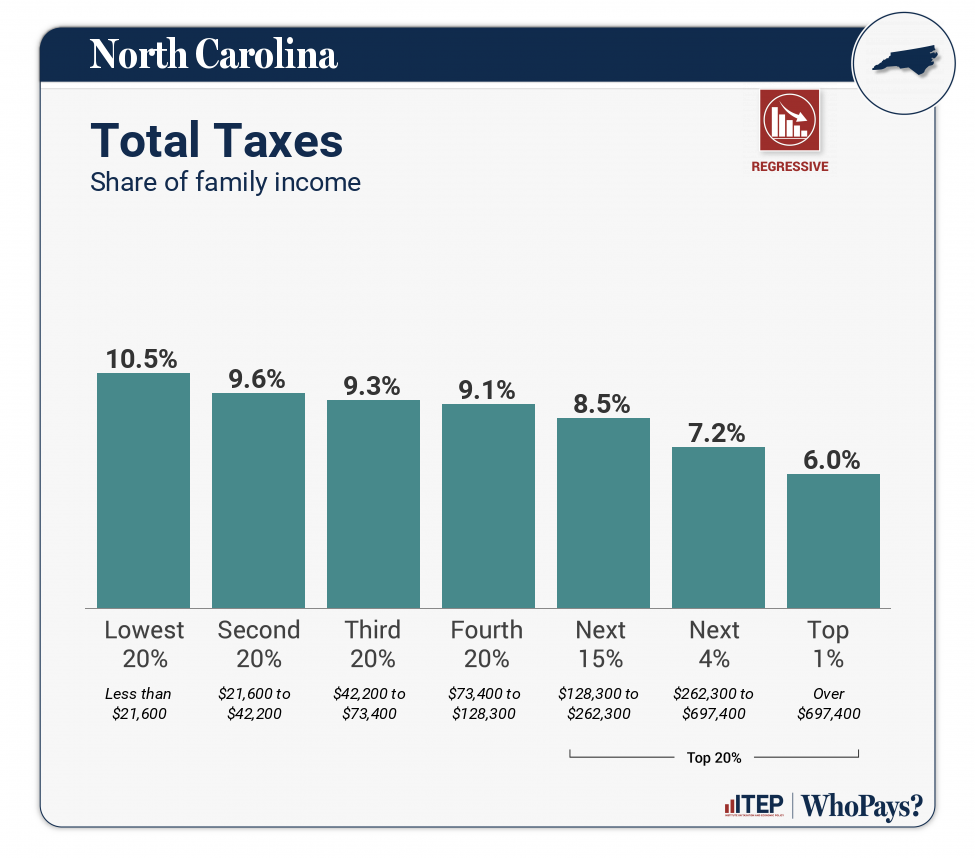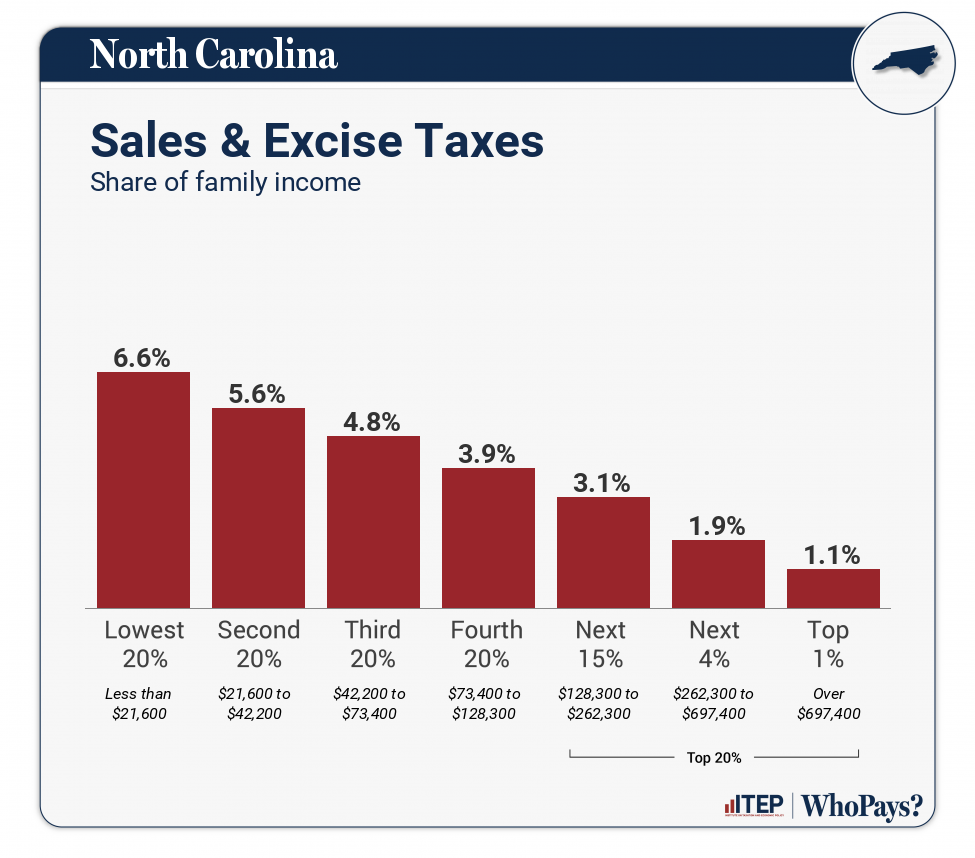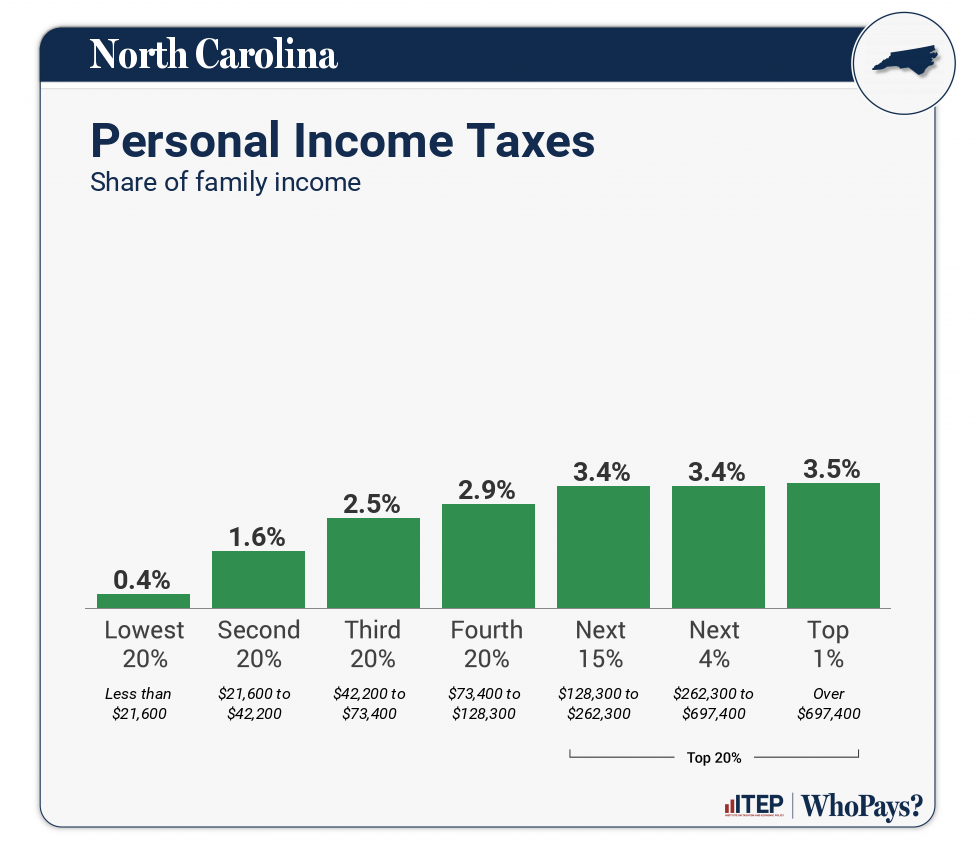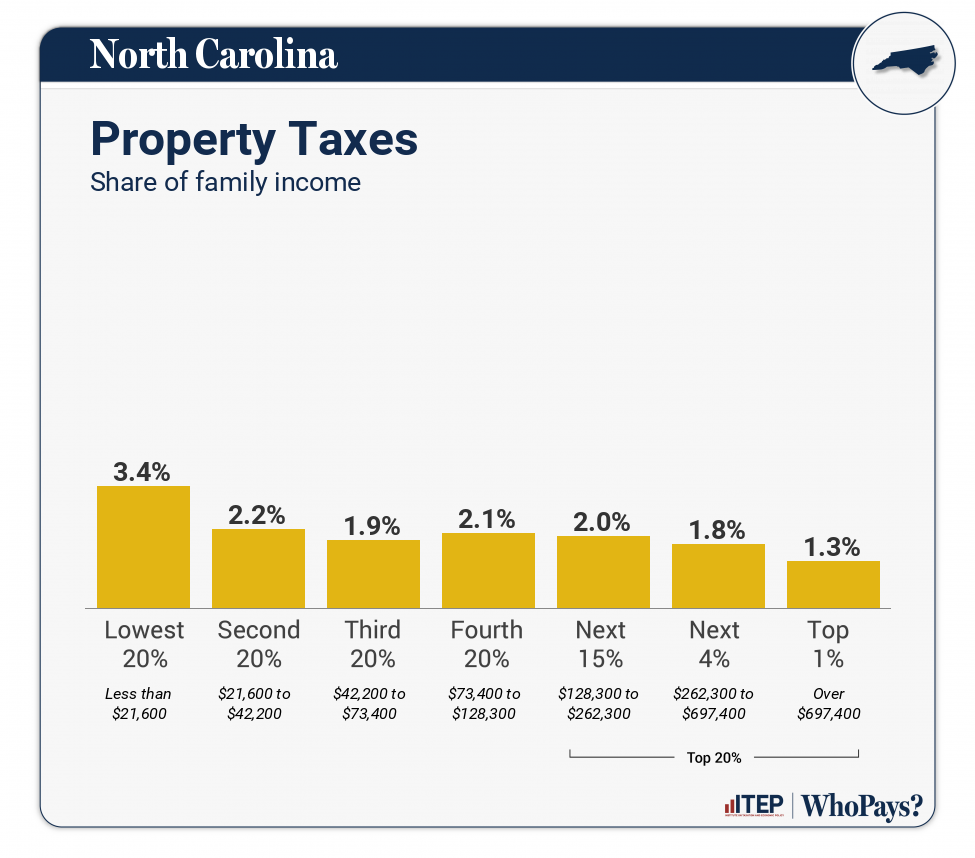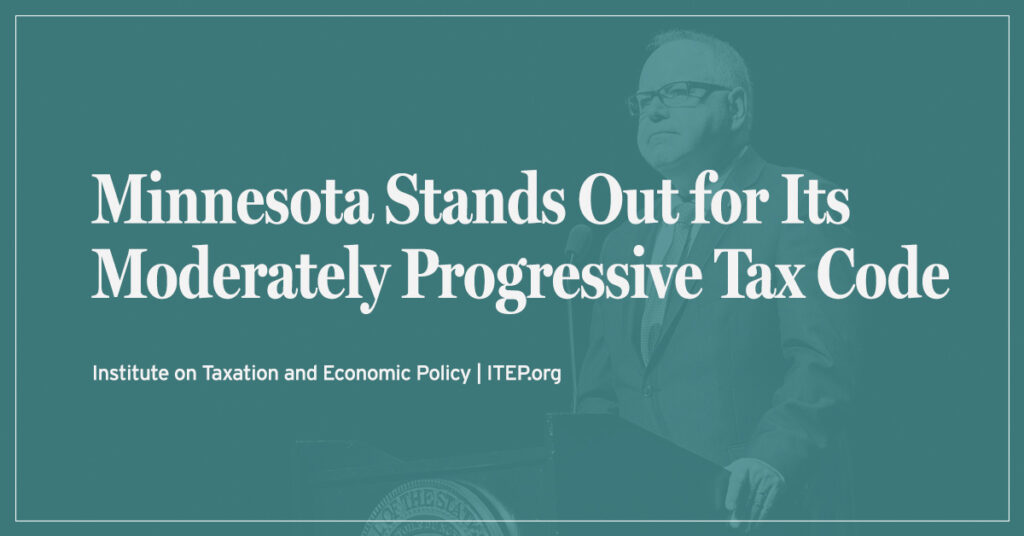
North Carolina
Download PDF
State and local tax shares of family income
| Top 20% | |||||||
| Income Group | Lowest 20% | Second 20% | Middle 20% | Fourth 20% | Next 15% | Next 4% | Top 1% |
| Income Range | Less than $21,600 | $21,600 to $42,200 | $42,200 to $73,400 | $73,400 to $128,300 | $128,300 to $262,300 | $262,300 to $697,400 | Over $697,400 |
| Average Income in Group | $12,400 | $31,000 | $55,700 | $97,400 | $167,700 | $387,400 | $1,339,900 |
| Sales & Excise Taxes | 6.6% | 5.6% | 4.8% | 3.9% | 3.1% | 1.9% | 1.1% |
| General Sales–Individuals | 3.6% | 3.2% | 2.8% | 2.3% | 1.7% | 1% | 0.4% |
| Other Sales & Excise–Ind | 1.6% | 1.2% | 0.9% | 0.7% | 0.5% | 0.3% | 0.1% |
| Sales & Excise–Business | 1.4% | 1.2% | 1.1% | 1% | 0.8% | 0.6% | 0.5% |
| Property Taxes | 3.4% | 2.2% | 1.9% | 2.1% | 2% | 1.8% | 1.3% |
| Home, Rent, Car–Individuals | 3% | 1.9% | 1.7% | 1.8% | 1.7% | 1.4% | 0.7% |
| Other Property Taxes | 0.3% | 0.3% | 0.3% | 0.3% | 0.3% | 0.4% | 0.6% |
| Income Taxes | 0.4% | 1.6% | 2.5% | 3% | 3.4% | 3.4% | 3.6% |
| Personal Income Taxes | 0.4% | 1.6% | 2.5% | 2.9% | 3.4% | 3.4% | 3.5% |
| Corporate Income Taxes | 0% | 0% | 0% | 0% | 0% | 0% | 0.1% |
| Other Taxes | 0.1% | 0.1% | 0.1% | 0.1% | 0.1% | 0.1% | 0.1% |
| TOTAL TAXES | 10.5% | 9.6% | 9.3% | 9.1% | 8.5% | 7.2% | 6% |
| Individual figures may not sum to totals due to rounding. | |||||||
ITEP Tax Inequality Index
ITEP’s Tax Inequality Index measures the effects of each state’s tax system on income inequality. According to this measure, North Carolina has the 24th most regressive state and local tax system in the country. Income disparities are larger in North Carolina after state and local taxes are collected than before. (See Appendix B for state-by-state rankings and the report methodology for additional detail.)
Tax features driving the data in North Carolina
|
Mortgage interest and property tax deductions are capped at $20,000
State sales tax base excludes groceries
Levies a business franchise tax
|
|
|
Real estate transfer tax does not include higher rate on high-value sales
No property tax “circuit breaker” credit for low-income taxpayers
Does not use combined reporting as part of its corporate income tax
Personal income tax rate cannot exceed 7.5 percent
Comparatively high state and local sales tax rates
Does not levy a tax on estates or inheritances
Local sales tax bases include groceries
Personal income tax uses a flat rate
No Earned Income Tax Credit (EITC)
No Child Tax Credit (CTC)
|

